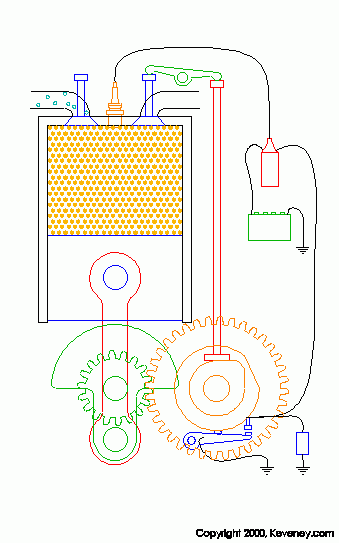The Handy Dandy Internal Combustion Engine
Today, the internal combustion engine is a very important part of the average person's life. We experience the wonder of this engine in most automobiles that use gasoline as a fuel. As one could guess, the Internal Combustion Engine is an engine in which combustion occurs internally... just kidding! (oversimplification at its finest). In all seriousness, let us discuss the four-stroke internal combustion engine since it is not too difficult to understand!
It is called a four-stroke engine because there are four 'strokes' per combustion cycle (up, down, up, down). It goes like this:
The first stroke is for the intake. The intake valve opens as the piston goes into its down position and lets in an oxygen-gasoline mixture (known as the fuel-air mixture). Going back to another post I wrote, the fuel-air mixture can be tuned for better gas mileage and/or power!
The second stroke is to compress the fuel-air mixture in the combustion chamber. While the piston is on its way up, the intake valve quickly shuts and an airtight situation is created, which allows for the compression.
The third stroke, or the combustion stroke, occurs directly as the piston is reaching the top of the chamber. The fuel-air mixture, in its extremely compressed state, is extremely flammable and when the spark plug goes off, explodes! This creates a great force and shoots the piston down.
The fourth and final stroke is to push the exhaust out. As the piston is on its way back up, the exhaust valve is opened, and the air that is created after the explosion is let out so fresh air can be let in.
After this, the cycle repeats itself! I found a diagram from keveney.com that I believe will help to imagine what it all means:

This process is the origin of how your car actually moves! The combustion pushes the pistons, which turn the crankshaft, which turns gears in the transmission, which turns the drive shaft, which turns the differential, which turns the axles which turns your wheels! A lot of steps, but very useful to know!


0 Comments
Recommended Comments
There are no comments to display.